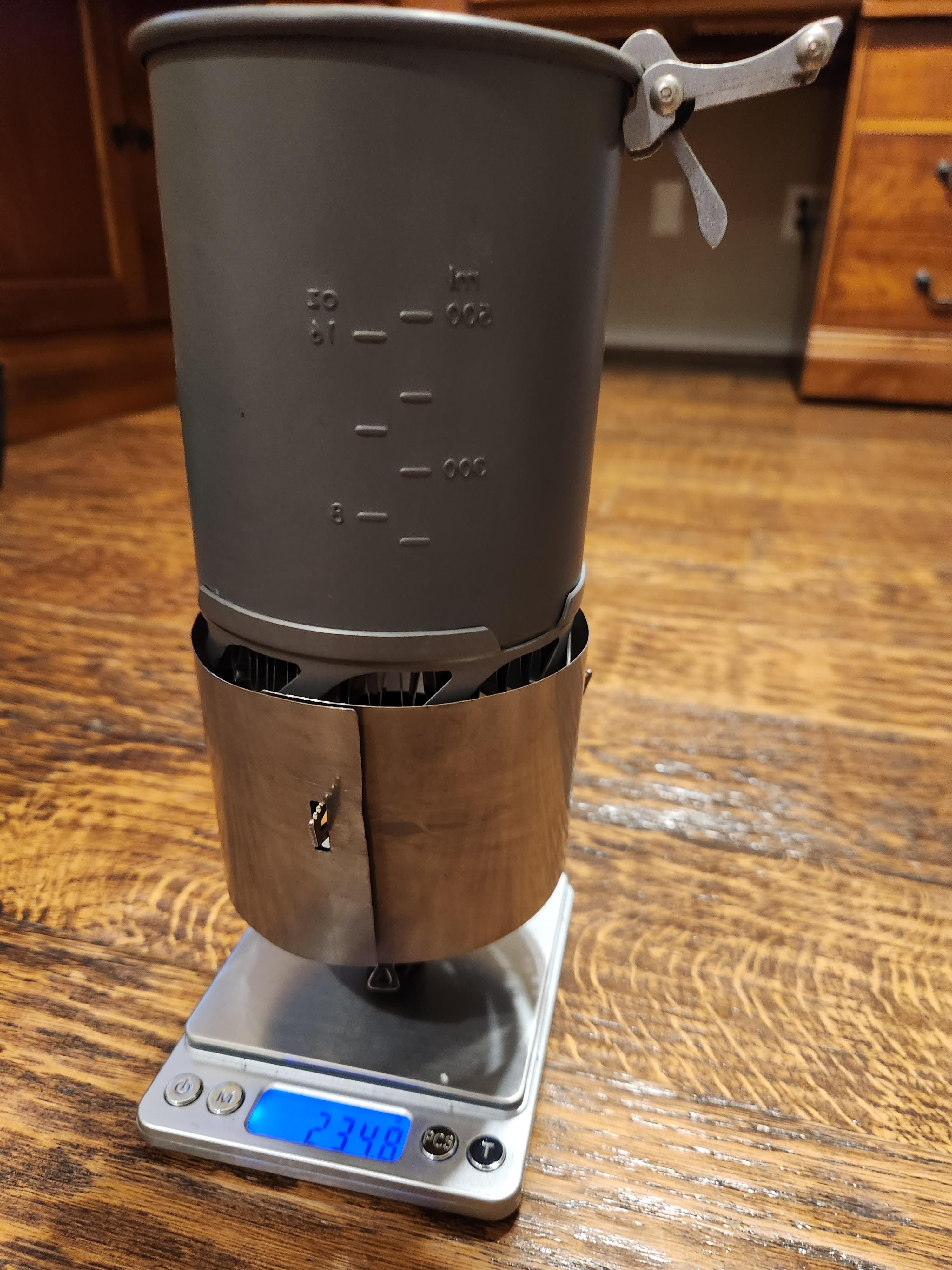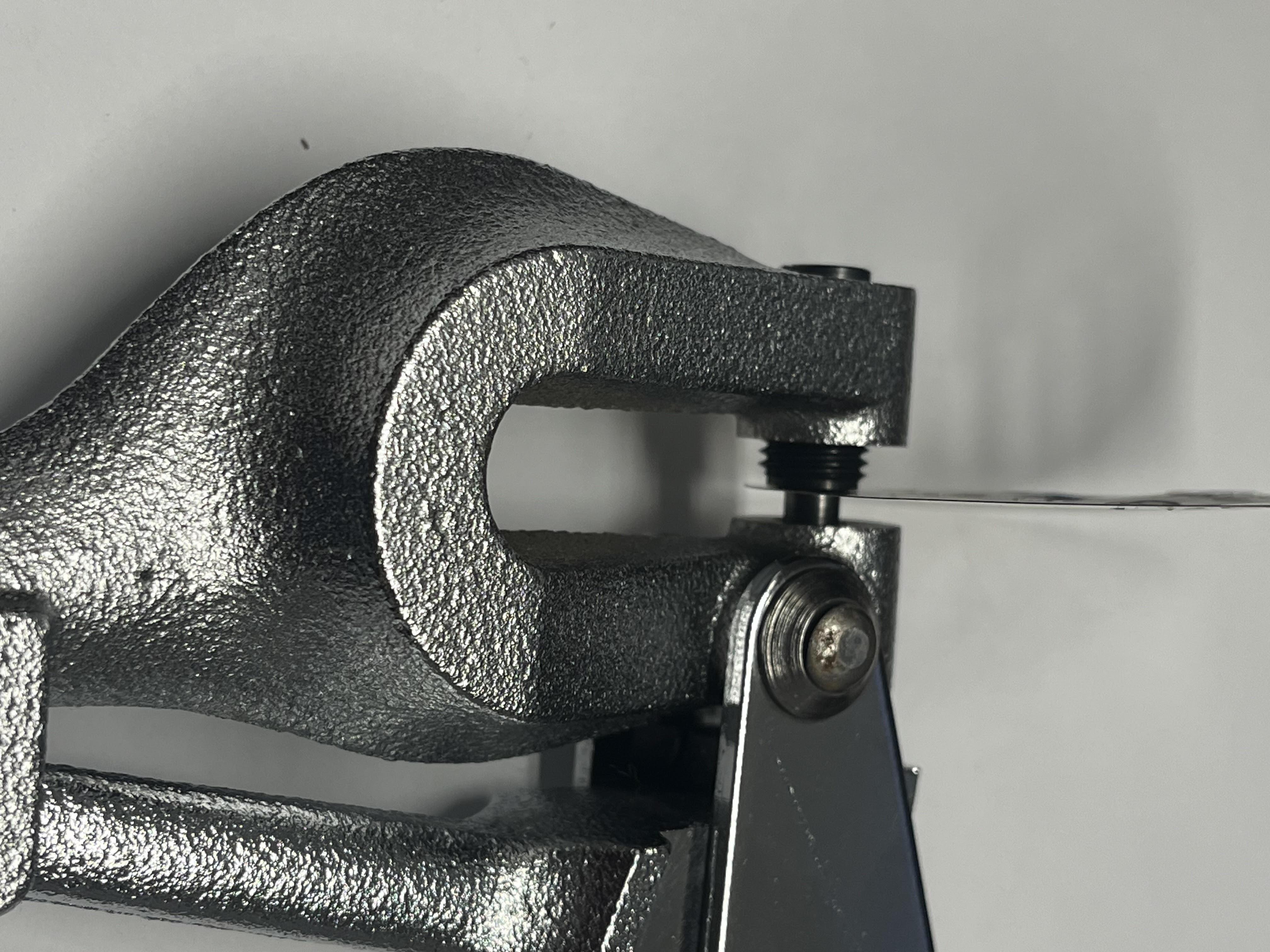Topic
Working with titanium sheet
Forum Posting
A Membership is required to post in the forums. Login or become a member to post in the member forums!
Home › Forums › Gear Forums › Make Your Own Gear › Working with titanium sheet
- This topic has 10 replies, 7 voices, and was last updated 1 year, 1 month ago by
 Alan W.
Alan W.
-
AuthorPosts
-
Jul 21, 2013 at 10:07 am #1305626
Worked with a lot of different sheet metals in the past, but never with Titanium sheet.
Question is how do you guys cut drill etc. Talking clean cuts clean drill holes etc.
I assume for drilling, slow with cooling and with a ti or cobalt coated drill. Cutting is really where I am lost. I have some good sheet metal shears but not sure they have hard enough blades.Thickness will be typical for windscreen, pot holders, wood stove etc.
Also any sources for sheet stock ??
Thanks
Jul 21, 2013 at 11:08 am #2008054it will cut with std metal shears. the stuff's annoying, not indestructable.
but, it is a beetch to drill.
cobalt. yes. and might as well get a set of real domestic cobalt drills, not just coated. premium drills are cheaper anyway if your time has any value.
you can cut titi also with a muffler cutter. this is a handy handy handy little air powered thing that cuts most anything.
if only having a bit to whack, you can use a dremel tool and it's assorted cutting/slotting discs.
twist drills do not do well in larger sizes of thin metal. the step-drill (uni-bit) format helps in this regard.
you may have to sandwich the thin material between something more real to get a nice hole.
it thee hast an angle grinder (and who doesn't) then they sell .040" slotting wheels that cut frikk'n Everything (excpet like.. carbide). note : 040" wheels can shatter in the hands of new/novice workers. i will not issue them to apprentices. but if you wear gloves, and a face shield, you'll be safe enough. you'll get a nicer edge grind cutting than shearing. you have to deburr it anyway.sheet titi can be had from that global source of All that is Good .. McMaster Carr. you'll need a commercial account to buy from them. for some, that can be a bugger.
perhaps, prototype your designs in something easier in the beginning.
in the realm of buying tools. i just buy what i need. screw the cost. and it consistently ends up being cheaper than any form of thrift.
Jul 21, 2013 at 12:09 pm #2008090Sources – Ti Goat has a good selection of 0.005" thick Ti sheets. You can get some reasonable Ti tubing on eBay through Tiger Metals.
Cutting – Hand shears work fine, I've even used a paper cutter. Notching tools don't work so well. For thicker Ti, cut off blade work fine, but they can leave a little slag.
Holes – Good luck. Thin Ti can be a pain as the thinnest relative to die clearance makes it difficult. It is best if you can punch hole away from the edge, a couple of diameter gap will help.
Best wishes,
Jon
Jul 21, 2013 at 1:47 pm #2008137Titanium Joe (google this) is a good source I've used. As others said, standard tin snips work well for cutting Ti foils. Heavy scissors will cut anything thinner than 0.005", but you'll dull them. I've found that a dremel cut-off wheel works well for making slots, deburring, and shaping edges. A sharp paper punch will make clean holes. A sheet metal punch will only make clean holes if the foil is 0.005" or thicker and a brittle alloy like 15-3-3-3. A sheet metal punch will just deform the foil and the hole will be jagged if it is a softer CP alloy. Punching and cutting with the dremel has produced much cleaner results for me than drilling.
I made this little wood stove with 0.005" 15-3-3-3 alloy Ti foil from ebay, using a Harbor Freight sheet metal punch and dremel cut-off wheels:
Jul 21, 2013 at 2:41 pm #2008156Oh, Ti is fun. With the right tools, it is nice tio work with, IF you know the rules.
Rule 1: Ti work hardens. Cut aggressively, don't fool around.
Source: Titanium Joe – cheaper than most any others. Wide range too. No account needed.
Drilling: slow speed and push. Good HSS is fine, but you must be aggressive. Coolant is not essential, but a drop or two of oil helps.
Cutting: depends on thickness. For 0.8 mm sheet some HEAVY snips work OK. Heavier than that gets harder. Carbide is good for machining – but be aggressive.
Choose your alloy carefully.
For really hard stuff, 6Al-4V is great, but it does not bend! It cracks. Unless you bring it up to a dull red, then it bends nicely.
For bending applications, use CP (Commercially Pure), and allow some radius to the bend. This machines a bit more easily too.See for example
http://www.backpackinglight.com/cgi-bin/backpackinglight/make_your_own_gear_titanium_snow_stakes.htmlhttp://www.backpackinglight.com/cgi-bin/backpackinglight/myog_ti_snow_stakes_part_2.html
Cheers
Cheers
Jan 28, 2024 at 5:22 pm #3802576Thanks for the tips in this thread.
-
<li style=”text-align: left;”>Using 0.005″ Titanium sheet from DutchWare, this stove wind screen was made with a simple box cutter. Weight of this 3″-tall
 screen is 14.6 grams. Weight along with my preferred MSR PR Deluxe, JetBoil MicroMo pot, and Suluk Miksa pot lifter is 235 grams, 8.3 ounces. It’s not the lightest, but I prefer the speed and fuel efficiency. Thanks also to Jon Fong for his extensive wind screen development and testing.
Jan 29, 2024 at 12:50 pm #3802616
screen is 14.6 grams. Weight along with my preferred MSR PR Deluxe, JetBoil MicroMo pot, and Suluk Miksa pot lifter is 235 grams, 8.3 ounces. It’s not the lightest, but I prefer the speed and fuel efficiency. Thanks also to Jon Fong for his extensive wind screen development and testing.
Jan 29, 2024 at 12:50 pm #3802616Nice Work! let us know how it works out for you.
Jan 29, 2024 at 7:31 pm #3802646Hey Alan, cool design. Ultimate simplicity. The notches on the pot support hold the ends of the sheet together?
I have used several brands of sheet metal punches successfully on .005″ Ti and .003″ stainless steel, and aluminum of similar thicknesses, for many years. I love Eastwood tools and highly recommend their $50 punch. The $40 Nieko is good too. I was disappointed with the results I got with a $130 Roper Whitney, which used to be the “gold standard” for punches of that type. The quality of the tool was very low. Stupid low to be honest, like painting over metal surfaces that need to move smoothly past each other but got gummed up with paint. Non-branded generic versions of what appear to be essentially identical tools can be had for less, but the quality control and customer support from Eastwood is the best in the industry, bar none.
Getting clean results when punching aluminum is easy, and holes of 3/32″, 1/8″ and 5/32″ in Ti and SS usually are too. But hole diameters of 3/16″ and up on material that thin require more work with Ti and SS. The trick is screwing the die down tight against the anvil, so that the metal does not move or deform when you apply the punch. Like this:

Not this:

It’s laborious and slow, because each hole requires 4 steps: (1) locate punch on material, (2) screw die down tight, (3) punch and (4) unscrew die.
To get this:

For holes bigger than 9/32″, like in the heat shield shown below, I start with a punched 1/4″ or 9/32″ and then take a Dremel to it. If you use stones to grind the hole bigger you’ll get some spectacular white sparks flying out.
I recommend when you try out your new windscreen that you check the temperature of the top of your fuel canister frequently while running the stove. I have made similar windscreens that come down close to the valve handle and was surprised at how much heat reflected/radiated down from the burner and pot bottom. Enough so that I started putting a heat shield on top of the tank before mounting the stove:

Random thought: leaving the heat shield off in cold temperatures might eliminate the need for a Moulder strip.
Jan 29, 2024 at 8:30 pm #3802650Those of you who are punching a lot of holes in thin titanium and stainless should consider getting percision dies made. You can get custome punch/die sets for Roper Whitney pretty easy. Generic tool have a lot of clearance. For thin stock, get a set of dies with a tight fit: like 1 mil clearance. My 2 cents.
Jan 30, 2024 at 2:04 am #3802653Hi Jon
Sources for custom die sets? (I have the RW punch.)
Cheers
Jan 30, 2024 at 9:07 am #3802665Responding for David G:
1. The grade/thickness of Ti from DutchWare is aptly maleable so that I could adjust the curvature to make the 2 ends hang just right where they overlap on the 3rd support prong of the PRD stove. No additional latching is needed.
2. Understood, cannot get the isobutane mix too warm.
A. I rarely “cook” or melt in pot, ie, burns are intermittent & short.
B. Most use is at altitude where more usual problem is cooling of cannister.
C. Can leave shield off when not windy.
D. In warm windy usage, the rectangular slots allow the shield to be flipped bottom to top, extending the shield higher on pot sidewalls and terminating further above cannister.
-
AuthorPosts
- You must be logged in to reply to this topic.
Forum Posting
A Membership is required to post in the forums. Login or become a member to post in the member forums!
Trail Days Online! 2025 is this week:
Thursday, February 27 through Saturday, March 1 - Registration is Free.
Our Community Posts are Moderated
Backpacking Light community posts are moderated and here to foster helpful and positive discussions about lightweight backpacking. Please be mindful of our values and boundaries and review our Community Guidelines prior to posting.
Get the Newsletter
Gear Research & Discovery Tools
- Browse our curated Gear Shop
- See the latest Gear Deals and Sales
- Our Recommendations
- Search for Gear on Sale with the Gear Finder
- Used Gear Swap
- Member Gear Reviews and BPL Gear Review Articles
- Browse by Gear Type or Brand.

 screen is 14.6 grams. Weight along with my preferred MSR PR Deluxe,
screen is 14.6 grams. Weight along with my preferred MSR PR Deluxe, 





